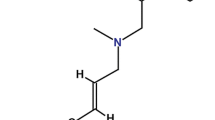Abstract
Objective
To compare the efficacy and safety of terbinafine with griseofulvin in the treatment of tinea capitis in Western China.
Methods
Children (2–14 years of age) with clinically diagnosed and potassium hydroxide microscopy–confirmed tinea capitis were randomized into three groups: group GRI4 received 4 weeks of griseofulvin; group TBF2 received 2 weeks of terbinafine; and Group TBF4 received 4 weeks of terbinafine. Clinical and mycological evaluations were done in 0, 2, 4, and 8 weeks and 1 year after therapy started. The isolated pathogenic fungi were evaluated for in vitro susceptibility by detecting the minimal inhibitory concentration (MIC) against terbinafine, griseofulvin, itraconazole, and ketoconazole.
Results
The clinical effectiveness rate of GRI4, TBF2, and TBF4 were 100% (95% CI-confidence interval: 82–100%), 96.3% (95% CI: 81–100%), and 100%(95% CI: 85–100%), respectively, at week 8 and 100% after 1 year for the 3 groups; clinical cure rates were 84.2%(95% CI: 77–99%), 85.2%(95% CI: 71–98%), and 78.3%(95% CI: 61–95%), respectively, at week 8 and 100% after 1 year for all agents; mycological cure rates were 100%(95% CI: 74–100%), 95.0%(95% CI: 74–100%), and 94.1%(95% CI: 50–93%) at week 8 and 100% after 1 year for the 3 groups. In vitro, all patient-derived cultures were sensitive to the four antifungal agents.
Conclusion
Data from the clinical trial and in vitro antifungal activity indicated that terbinafine is efficacious and well tolerated in the treatment for Trichophyton infections (T. violaceum; Arthroderma vanbreuseghemii; and T. tonsurans) of the scalp, i.e., a 2- to 4-week course of terbinafine is as effective as a 4-week course of griseofulvin; in fact, a 2-week course of terbinafine is sufficient. Terbinafine is an effective alternative to griseofulvin against tinea capitis of Trichophyton infections.
Similar content being viewed by others
References
Deng S, Bulmer G, de Hoog GS. Deviating flora of tinea capitis in Western China suggests slow migration rates in dermatophytes. Med Mycol. 2008;46:421–7.
Roberts B, Friedlander S. Tinea capitis: a treatment update. Pediatr Ann. 2005;34:191–200.
Elewski BE, Ca′ceres HW, DeLeon L, et al. Terbinafine hydrochloride oral granules versus oral griseofulvin suspension in children with tinea capitis: results of two randomized, investigator-blinded, multicenter, international, controlled trials. J Am Acad Dermatol. 2008;59:41–54.
Kane J, Summerbell R, Sigler L, Krajden S, Land G, editors. Laboratory handbook of dermatophytes: a clinical guide and laboratory manual of dermatophytes and other filamentous fungi from skin, hair, and nails belmont. CA: Star; 1997. p. 33–44.
National Committee for Clinical Laboratory Standards. Reference method for broth dilution antifungal susceptibility testing of conidial forming filamentous fungi. Proposed Standard M38—P. Wayne: NCCLS; 1998.
Tai S, Tian S, Dong Y. Survey report of pathogens of tinea capitis in Xinjiang, China. J Derm Venereol. 1992;6:218.
Krafchik B, Pelletier J. An open study of tinea capitis in 50 children treated with a 2-week course of oral terbinafine. J Am Acad Dermatol. 1999;41(1):60–3.
Gupta AK, Adam P, Dlova N, Lynde CW, Hofstader S, Morar N, et al. Therapeutic options for the treatment of tinea capitis caused by Trichophyton species: griseofulvin versus the new oral antifungal agents, terbinafine, itraconazole and fluconazole. Pediatr Dermatol. 2001;18:433–8.
Fuller LC, Smith CH, Cerio R, Marsden RA, Midgley G, Beard AL, et al. A randomized comparison of 4 weeks of terbinafine vs. 8 weeks of griseofulvin for the treatment of tinea capitis. Br J Dermatol. 2001;144:321–7.
Rademaker M, Havill S. Griseofulvin and terbinafine in the treatment of tinea capitis in children. N Z Med J. 1998;111:55–7.
Fleece D, Gaughan JP, Aronoff SC. Griseofulvin versus terbinafine in the treatment of tinea capitis: a meta-analysis of randomized, clinical trials. Pediatrics. 2004;114:1312–5.
Haroon TS, Hussain I, Aman S, Jahangir M, Kazmi AH, Sami AR, et al. A randomized double-blind comparative study of terbinafine for 1, 2 and 4 weeks in tinea capitis. Br J Dermatol. 1996;135:86–8.
Friedlander SF, Aly R, Krafchik B, Blumer J, Honig P, Stewart D, et al. Terbinafine in the treatment of richophyton tinea capitis: a randomized, double-blind, parallel-group, duration finding study. Pediatrics. 2002;109:602–7.
Jahangir M, Hussain I, Ul Hasan M, Haroon TS. A doubleblind, randomized, comparative trial of itraconazole versus terbinafine for 2 weeks in tinea capitis. Br J Dermatol. 1998;139:672–4.
Gupta AK, Adam P. Terbinafine pulse therapy is effective in tinea capitis. Pediatr Dermatol. 1998;15:56–8.
Gan VN, Petruska M, Ginsburg CM. Epidemiology and treatment of tinea capitis: ketoconazole vs. griseofulvin. Pediatr Infect Dis J. 1987;6:46–9.
Caceres-Rios H, Rueda M, Ballona R, Bustamante B. Comparison of terbinafine and griseofulvin in the treatment of tinea capitis. J Am Acad Dermatol. 2000;42:80–4.
Memißolu HR, Erboz S, Akkaya S, Akan T, Aksungur VL, Ünal I, Karakaß M. Comparative study of the efficacy and tolerability of 4 weeks terbinafine therapy with 8 weeks griseofulvin therapy in children with tinea capitis. J Dermatol Treat. 1999;10:189–93.
Ghannoum MA, Chaturvedi V, Espinel-ingroff A, et al. Intra-and interlaboratory study of a method for testing the antifungal susceptibilities of dermatophytes to antifungals. J Clin microbial. 2004;42:2977–9.
Mock M, Monod M, Baudraz-Rosselet F, Panizzon RG. Tinea capitis dermatophytes: susceptibility to antifungal drugs tested in vitro and in vivo. Dermatology. 1998;197:361–7.
Macura AB. In vitro susceptibility of dermatophytes to antifungal drugs: a comparision of two methods. Int J Dermatol. 1993;32(7):533–6.
Acknowledgments
Supports from Novartis Pharmaceutica (Beijing) to Deng S. are gratefully acknowledged. We thank G. S. Bulmer for excellent English correction of manuscript. G. Li is acknowledged for the collection of clinical samples in Southern Xinjiang.
Author information
Authors and Affiliations
Corresponding author
Rights and permissions
About this article
Cite this article
Deng, S., Hu, H., Abliz, P. et al. A Random Comparative Study of Terbinafine Versus Griseofulvin in Patients with Tinea Capitis in Western China. Mycopathologia 172, 365–372 (2011). https://doi.org/10.1007/s11046-011-9438-2
Received:
Accepted:
Published:
Issue Date:
DOI: https://doi.org/10.1007/s11046-011-9438-2




